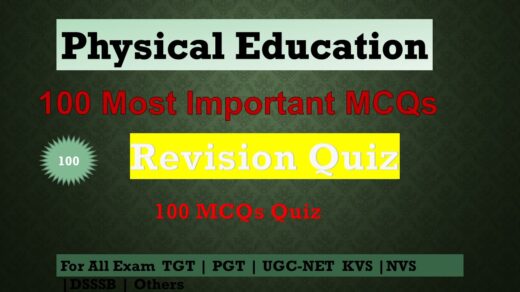Cricket Rules, History and Dimensions
Cricket, often called the gentleman’s game, has a rich and fascinating history. Over the centuries, its rules and measurements have evolved, making the game what it is today. Let’s take a simple journey through the cricket rules, history and measurements of cricket.
History of Cricket
Origins: A Simple Guide
Cricket, known today as a beloved sport around the world, has a fascinating history that dates back centuries. Let’s break down its origins and how it got its name.
Early History
- Saxon or Norman Times: Cricket is believed to have started in the Saxon or Norman times, initially played by children in rural areas.
- 1300 A.D.: According to Wisden, often called the “Bible of Cricket,” the first mention of cricket was in 1300 A.D. This is supported by the discovery of a bat and ball in the almirah of King Edward.
- 1611: Cricket began to be played as an adult sport.
The Name “Cricket”
- Middle Dutch “Krick”: The name might come from the Middle Dutch word “krick,” which means a stick.
- Old English “Cricc” or “Cryce”: It could also come from the Old English words “cricc” or “cryce,” which mean a crutch or staff.
- French “Criquet”: Another possibility is the French word “criquet,” meaning a wooden post.
Major Cricket Organizations
International Cricket Council (ICC)
The International Cricket Council, established in 1909, is the global governing body for cricket. It oversees international competitions, sets the cricket rules, and works to promote the sport worldwide. Major tournaments organized by the ICC include the ICC Cricket World Cup, ICC T20 World Cup, and the ICC Champions Trophy.
Board Of Control For Cricket In India (BCCI)
The BCCI, founded in 1928, is the governing body for cricket in India. It organizes domestic tournaments, manages the national team, and has played a crucial role in the development of cricket in India. The BCCI is one of the most influential cricket boards globally, primarily due to India’s massive cricket fanbase and market.
Cricket Measurements, and Equipment
Field Measurements
Ground– North – South direction
There are no fixed dimensions for the field but its diameter usually varies between 450ft (137m) and 500ft (150m)
Pitch:

- The pitch is 22 yards (20.12 meters) long and 10 feet (3.05 meters) wide.

Boundary:
- The distance from the center of the pitch to the boundary varies, typically between 65 and 90 yards (59 to 82 meters).
Stumps:
- Three stumps, each 28 inches (71.1 cm) tall, are spaced evenly to form the wicket.

Equipment
Ball
- Ball: Made of cork and leather, with a circumference of 22.4 to 22.9 cm and weighing between 155.9 to 163 grams.

Bat:
- Made of wood (usually willow), with a blade no longer than 38 inches (96.5 cm) and a width no more than 4.25 inches (10.8 cm).

Protective Gear:
- Includes pads, gloves, helmets, and abdominal guards to protect players from injury.
Cricket Rules:
Format:
- Cricket can be played in several formats, including Test matches (over five days), One-Day Internationals (50 overs per side), and Twenty20 (20 overs per side).
Objective: The main objective is to score more runs than the opposing team.
Teams: Each team consists of 11 players.
Innings: Teams take turns to bat and bowl. An innings ends when 10 players are out, or a set number of overs are completed.
Overs: An over consists of 6 legal deliveries bowled by a bowler.
Runs: Runs can be scored by hitting the ball and running between the wickets, or by hitting boundaries (4 runs if the ball hits the ground before crossing the boundary, 6 runs if it crosses the boundary without touching the ground).
Dismissals: There are several ways a batsman can be out, including bowled, caught, leg before wicket (LBW), run out, and stumped.
- Bowled
- Stumped
- Hit-wicket
- LBW (Leg Before Wicket)
- Caught out(Caught Behind by the Keeper, Caught by a Fielder, Caught & Bowled)
- Hit the ball twice-If a batsman hits the ball twice, he is given out. The first touch is when the ball strikes the bat. The second touch has to be deliberate and not necessarily with the bat, but the body of the batsman as well.
- Obstructing the Field- A batsman knowingly running in such a way that it prevents the ball from hitting stumps can be given out by the umpire on appeal from fielding team.
- Timed-out- If a new batsman takes more than 3 minutes to cross the boundary for coming to the crease in ODI cricket and in T20s it’s just 120 seconds then the batsman is out.
- Handling the Ball- If the batsman touches the ball with his hand, not in contact with the bat, without the approval of the fielder, the batsman is out if the fielding team appeals.
- Retired out-A batsman is considered retired out if he leaves the field without the prior acquiescence of umpire apart from any injury and fails to resume the innings.
No Ball–
- Front Foot No Ball – Overstepping by the Bowler
- No Ball if Ball Bounces Over Batsman’s Head
- No Ball if Bowler Bowls a Beamer
- No Ball for Chucking (Flexing the Arm)
- Back Foot No Ball
- No Ball for Dangerous Short-pitched Deliveries
- No Ball for Failure to Notify the Mode of Delivery
- Underarm No Ball
- No Ball if Wicketkeeper is in Front of Stumps
- No Ball if Bowler Touches Wickets during Delivery
- No Ball if Ball Stops Before Reaching the Batsman
- No Ball if Ball Bounces more than Once No Ball if Bowler Throws the Ball before Delivery
- . No Ball if Ball Bounces off the Pitch
- No Ball if Fielder Intercepts a Delivery
- No Ball for Breaching the On-side Rule No Ball for Fielders Encroaching the Pitch
Power Play–
ODI
During the first 10 overs of an innings, a maximum of two fielders are allowed outside the 30-yard circle .This is called the 1st powerplay.
Between overs 11 and 40, a maximum of four fielders are allowed outside the 30-yard circle.
In the final 10 overs (41–50), a maximum of five fielders will be allowed to field outside the 30-yard circle.
Twenty20
The first six overs of an innings will be a mandatory powerplay, with only two fielders allowed outside the 30-yard circle. Beginning with the seventh over, no more than five fielders will be allowed outside the 30-yard circle.
Ball Changing-
- In Test cricket rule, a new ball is used at the start of each innings in a match.
- In Limited Over Internationals, two new balls, one from each end, are used at the start of each innings.
- A ball may not be replaced except under specific conditions described in the Laws of Cricket:
- If the ball becomes damaged or lost.
- If the condition of the ball is illegally modified by a player.
- In Test cricket rules, after 80 overs, the captain of the bowling side has the option to take a new ball.
Awardees in Indian Cricket:
Dronacharya Award
The Dronacharya Award is given to outstanding coaches in sports. Ramakant Achrekar, the coach of legendary cricketer Sachin Tendulkar, was the first cricket coach to receive this award in 1990.
Arjuna Award
The Arjuna Award is given for outstanding achievement in sports. Salim Durani was the first cricketer to receive this award in 1961.
Rajiv Gandhi Khel Ratna Award
The Rajiv Gandhi Khel Ratna is India’s highest sporting honor. Sachin Tendulkar was the first cricketer to receive this award in 1997.
Major Cups and Tournaments
ICC Cricket World Cup
The ICC World Cup, first held in 1975, is the premier ODI cricket tournament. It is held every four years and features teams from around the world competing for the title.
ICC T20 World Cup
The ICC T20 World Cup, first held in 2007, is the premier T20 cricket tournament. It is held every two years and showcases the best T20 talent globally.
ICC Champions Trophy
The ICC Champions Trophy, first held in 1998, is a prestigious ODI tournament featuring the top eight cricketing nations. It was last held in 2017, with discussions ongoing about its future.
Indian Premier League (IPL)
The IPL, established in 2008, is a professional T20 cricket league in India. It has become one of the most popular and lucrative cricket leagues globally, attracting top talent and massive viewership.
Cricket is more than just a game—it’s a tradition steeped in history and strategy. Cricket rules, while intricate, are what give the sport its unique character and thrill. Understanding the Cricket rules allows players and fans alike to fully immerse themselves in the excitement of the game, from the moment the ball is bowled to the final run scored.
As cricket continues to grow and evolve on the global stage, mastering the cricket rules becomes an essential part of truly enjoying and respecting this sport.
Whether you’re new to cricket or a lifelong enthusiast, embracing the nuances of the cricket rules will enhance your appreciation and elevate your experience.
So next time you’re on the field or watching from the sidelines, let the cricket rules guide you, deepen your connection to the sport, and ignite your passion for cricket.
Download PDF- Cricket rules
Watch video on this topic on youtube.
Test your knowledge with additional quizzes here.




